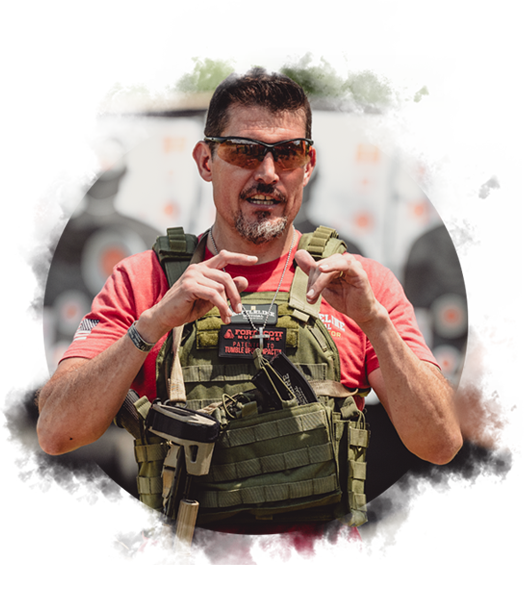In the world of firearms, training can mean the difference between safety and peril. However, not all training prepares you for reality. Traditional range practice builds skills, yet it often falls short of real-world demands. That’s where practical firearm training steps in, focusing on drills that mimic actual defensive encounters. This method emphasizes drawing from concealment, managing stress, moving effectively, and using cover wisely. Here, we’ll dive into why practical training matters, explore key drills, and offer ways to elevate your readiness.
Why Practical Training Stands Out
Most shooters start at the range, standing still, firing at paper targets. It’s a solid foundation for accuracy. Yet, defensive scenarios rarely unfold so neatly. Data shared suggests most real encounters happen within a few yards, last seconds, and involve chaos. Standing in one spot won’t cut it when you need to react fast. Practical firearm training bridges this gap by simulating those high-stakes moments.
Consider the psychological edge it offers, too. Stress can unravel even the best shooters—hands shake, focus blurs. Surprisingly, many don’t realize that without training under pressure, accuracy can plummet dramatically. Practical training introduces stress deliberately, like using timers or physical challenges, to build resilience. For a deeper look at why this shift matters, see Why You Need a Mental Preparation Plan for Concealed Carry.
Meanwhile, the firearms community is buzzing about this trend. Posts online and expert insights point to a growing demand for skills that match reality. Unlike static shooting, practical training hones your ability to think, move, and act under duress.
The Limits of Traditional Range Work
Range time isn’t useless—it sharpens your aim and builds confidence. However, it often skips the unpredictability of a threat. For instance, you’re not dodging or hiding behind anything. Practical training flips that script, preparing you for the unexpected. Curious about the basics? Check out Firearms Training for Beginners: A Step-by-Step Guide.
Mastering Concealment and Stress Drills
Drawing from concealment is a cornerstone of practical firearm training. In real life, your gun isn’t out in the open—it’s tucked away. A solid drill to start with is the Concealment Draw. You lift your shirt, draw, and fire at a target, all within a tight timeframe. It’s simple but forces you to smooth out every motion. For tips on perfecting this, visit How to Choose the Right Holster for Concealed Carry.
Stress changes everything, though. Your heart races, your grip weakens—normal stuff in a crisis. To mimic this, try adding a sprint before drawing or use a shot timer. One neat trick is the “Stress Box Drill”: run to a spot, draw from concealment, and hit multiple targets fast. It’s tough, but it works. Learn more about gear to support this in Concealed Carry Gear: Essentials for Every Day Carry.
Why Stress Training Pays Off
Here’s something few talk about: stress can cut your shooting precision in half if you’re not ready. By practicing under pressure, you train your brain to stay calm. For example, some shooters use noise—like a partner yelling—to simulate chaos. It’s a game-changer. Dig into this further with How to Train for High-Stress Shooting Scenarios.
Movement and Cover: The Dynamic Duo
Standing still in a gunfight is a bad idea. Movement keeps you alive—it throws off an attacker’s aim. Practical firearm training teaches you to shoot while stepping side to side or retreating. The “Move and Shoot Drill” is a favorite: walk, aim, fire, repeat. It’s harder than it sounds, but it builds real skill. For a breakdown of stance and motion, see Understanding Proper Shooting Stance for Concealed Carry.
Cover’s just as crucial. A wall or car can shield you, but only if you use it right. Too many hug the barrier, limiting their view. Instead, lean out slightly, keeping mobile. Try the “Cover Transition Drill”: move between two objects, popping out to shoot each time. For more on this, check Tactical Movement for Concealed Carry: A Primer.
Mixing It Up with Scenarios
Scenario training is trending for a reason—it’s immersive. Picture navigating a mock house, using cover, and hitting targets on the fly. It sharpens decision-making and mimics real threats. Few know that pros often train this way to cut reaction times. Explore this in Building Situational Awareness for Concealed Carry.
Putting It All Together: Tips to Start
Ready to dive in? Start with safety—always clear your space and gear. Dry fire practice is your friend here. Without ammo, work on drawing, moving, and aiming smoothly. Once you’re set, hit a range that allows dynamic drills. For home practice ideas, see Dry Fire Training: How to Practice Safely at Home.
Build up slowly. Master concealment draws before adding stress or movement. Then, layer in complexity—like running to cover under a timer. A pro tip: record yourself to spot flaws. For gear to make this easier, visit Best Concealed Carry Belts for Every Budget.
Finding the Right Guidance
Self-training rocks, but a coach can fast-track your progress. Look for classes at https://e3firearmsassociation.com that cover practical skills. Many don’t realize how much a single lesson can refine technique. For course ideas, check Top 5 Concealed Carry Training Courses for 2023.
Wrapping Up: Your Next Move
Practical firearm training isn’t just a buzzword—it’s your edge in a crisis. Drills blending concealment, stress, movement, and cover prep you for the real deal. The big idea? Readiness isn’t about perfect aim alone; it’s about thriving under pressure. Take these tips, hit the range, and explore more at https://e3firearmsassociation.com. Your next step: practice one drill this week. Stay safe, stay sharp.
For more firearms resources and insights, be sure to visit: https://www.e3firearmsassociation.com/blog/

